The Amazon Rainforest Fires and the Hamburger Connection | ISSUE 22-p (for podcast), Aug. 23, 2019 | Podcast Episode 4
NOTE: The following text contains some content not featured on the podcast above, plus links and longer excerpts to articles mentioned. The podcast script is adapted from Issue 22 of Changing Climate Times. Thanks to Kyle Vass for primo podcast coaching. (Check out his work at exchange.prx.org/user/kylevass)

INTRODUCTION | ‘As the World Burns’
What you’re hearing on this podcast is the sound of a thunderstorm last night that broke overtop the roof of my house. I used to love the sound of thunderstorms. Still do. But if you’re like me, if you’re tuned into the latest, greatest news about climate change, you can’t help but wonder every time you hear a storm.
Especially a big one.
Is this storm more extreme than the ones I used to love as a kid? Is this yet another crazy weather event, juiced by our drastically changing climate? A climate which according to an overwhelming majority of climate scientists has turbocharged forest fires, hurricanes and floods?
Dammit, you can’t even enjoy a nice crackling thunderstorm without wondering if it’s a signal of the climate End Times, come to your neighborhood!
Now, I don’t know if last night’s thunderstorm was just your average thunderstorm. But what IS clear, according to people who study such things for a living, is that the forest fires currently raging in the Amazon rainforest are most certainly NOT your average forest fires.
Which brings us to this special edition of Changing Climate Times podcast titled “As the World Burns.”

CHAPTER ONE | House Fire
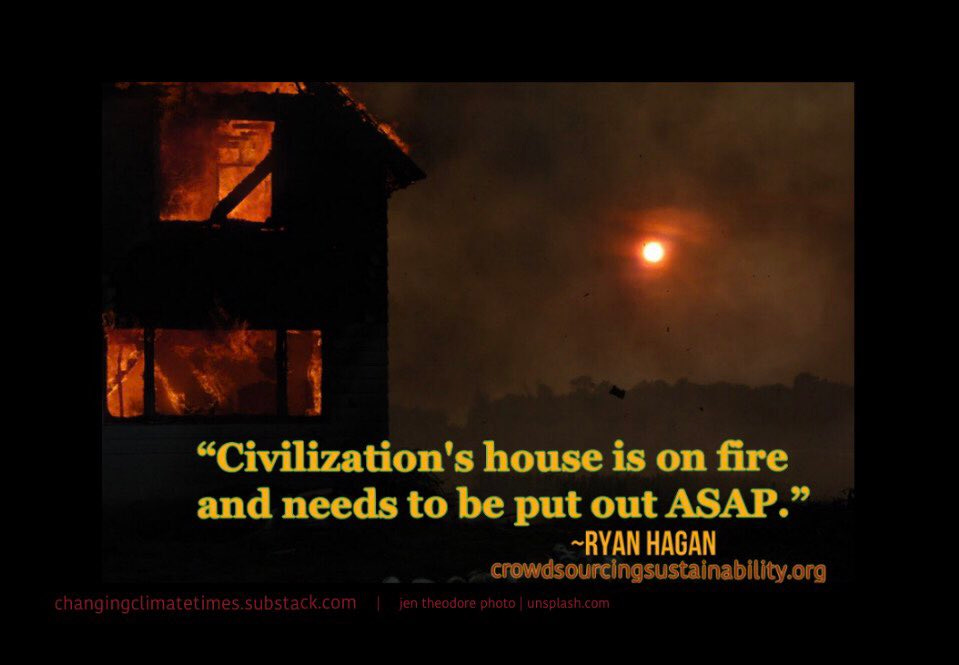
My friend, Ryan Hagan, also publishes a climate change newsletter. It’s called Crowdsourcing Sustainability. There was something that caught my eye in his most recent issue last Friday. He wrote:
“Civilization’s house is on fire and needs to be put out ASAP.”
Of course, what Ryan was talking about is the Earth at large. But within days of writing those words news of fires in the Amazon rainforest caught the world’s attention.
The Amazon rainforest is so big it includes 10 percent of the world’s biodiversity and produces 20 percent of Earth's total oxygen. That’s why it is called "the Lungs of the World."
Just to visualize its size, if we were able to relocate the Amazon to America, it would be as big as the 48 contiguous United States, minus Alaska and Hawaii.
It sprawls across almost half the entire South American continent. The current fires are so widespread they can be seen from outer space. Here’s a time-lapse video of the fires created from NASA satellite imagery over 90 days by Joaquin Beltran:

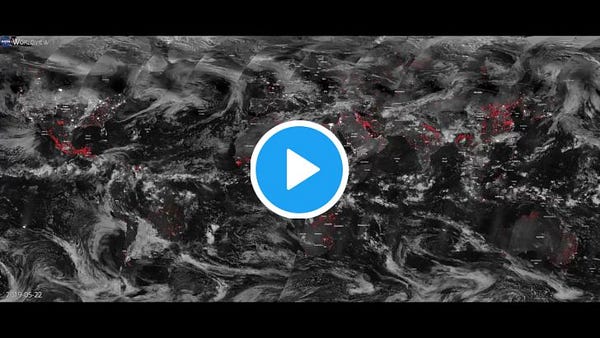
Those blood-red flares that leap up all across the heartland of South America are showing us something.
Or telling us something.
To borrow my friend Ryan’s phrase: ‘Hey, Civilization! Our house is on fire!!’
And what if I were to tell you that we’ve set our house on fire because we want a cheeseburger.

CHAPTER TWO | Would You Like Fries with That?
You’ll hear pushback from climate deniers that such fires are seasonal in the rainforest. But as Greenpeace forest campaigner Juman Kubba told the BBC in this audio piece, “Why Is the Amazon Burning?” and in this BBC article, the politics of Brazil and corporate supply lines that feed the maw of fast-food chains, play a key role in torching the Amazon.
Kubba said there has been a 145 percent increase in fires in 2019 compared to last year, with the rise to power of Brazilian President Jair Bolsonaro. As the BBC piece notes:
Forest fires are common from July to October. But activists say Brazilian President Bolsonaro’s policies have encouraged farmers to clear land for crops or grazing—resulting in an increase in fires.
“The scale of this is new,” says Kubba. “The rate which were seeing fires is unprecedented. That’s incredible growth … This is the lungs of the planet that are on fire.”
Vast sections of the Amazon rainforest are being burned out to raise crops linked to international trade. Says Kubba: “When we go to big fast-food giants like KFC, McDonalds or Burger King, the burgers that we eat will be coming from animals that are fed on animal feed which is grown in places like Brazil.”
Those fast-food mega-corporations “have tremendous power to influence what is being done and not done in Brazil,” says Kubba. “So, we should be asking them to change their ways.”
At the level of international trade, that also means putting a hold on trade agreements, Kubba says, until the Amazon rainforest is protected “and we really have environmental and human rights protection at the heart of trade deals.”

CHAPTER THREE | Enter the boycott
Whenever I talk about climate change, a common reply is: “Just tell me what to do!”
Writer Nylah Burton is telling folks what to do. In a recent Twitter thread, she said: “If you want to do something about the #AmazonRainforest and the killing of indigenous people, the easiest and most impactful thing you can do is stop eating beef.”

Now, that sounds way too easy. But Burton is not being glib and superficial.
Burton expanded upon her tweet in an article in Medium titled “The Amazon Rainforest Is Burning and You Can Help: Stop Eating Beef: The time for change is right now.” She writes:
“The boycott is a tried and true method of resistance. But if you live in Europe, China, the United States, Canada, or Australia, you may think your boycott can’t help save the Amazon rainforest, or support the Indigenous people of Brazil.
“But your money—especially if you eat beef and other meats—is almost certainly funding the degradation of the Amazon rainforest.
Burton mentions a report by the Articulation of the Indigenous Peoples of Brazil. It talks about consumer involvement in eating beef that may be sourced from the Amazon rainforest. The report is titled “Complicity In Destruction II: How Northern Consumers and Financiers Enable Bolsonaro’s Assault on the Brazilian Amazon.”
It details the Indigenous-led call for people in the countries mentioned to boycott certain Brazilian products and businesses that invade their lands.
So, let’s unpack this idea of ‘complicity.’ Complicity is “the involvement as an accomplice in a questionable act or a crime.”
I don’t know about you, but I don’t think of myself as a criminal when I pick up a Happy Meal or french fries at a fast-food drive up.
But stick with the argument here. The Amazon Rainforest—remember, it’s ‘The Lungs of the World’— is key to the health and well-being of the entire planet. Can YOU and I live without our lungs?
I didn’t think so.
So, indigenous people in the Amazon rainforest are calling on us consumers to boycott certain Brazilian products and businesses. They want us to stop supporting businesses that invade the rainforest and engage in illegal deforestation for profit.
Burton’s article goes on to note:
There are many Brazilian products that are contributing to deforestation, like timber and fossil fuels. But beef is an incredibly easy product to boycott—barring any medical or cultural needs that require beef consumption, of course.

CHAPTER FOUR | Getting Beyond Beef
It may be a bridge too far for committed carnivores to immediately stop eating beef.
But for folks trying to transition away from eating so much meat, consider this. Perhaps crack open that door by first cutting back.
You could start by voting for non-beef vegetarian substitutes like Burger King’s Impossible Burger. The burger is made from soy which has its own environmental issues. The report by the Indigenous Peoples of Brazil also fingers the soy industry in Amazon deforestation. Just like beef, soy is a multibillion profit machine, generating more than $30 billion for Brazil.
But we have to start somewhere and kudos to fast-food giant Burger King for baby steps.
You might try the pretty amazing Beyond Burger. Unlike most other “veggie” hamburger-like patties made from soy, Beyond Burgers are made of pea protein. They recently released version 2.0. It’s an even fattier blend and it is plain scrumptious.
And that blood in the frying pan? Elsie the Cow and tracts of rainforest were not sacrificed for your Beyond Burger. It’s beet juice.
And no, I’m not on retainer for Beyond Burgers. But the company is welcome to send me any new products they launch.
Isn’t it time for Beyond Tofurkey?

CHAPTER FIVE | Time for Tactics
The drumbeat of all this climate change news can feel overwhelming. There’s a reason there’s a growing field devoted to “eco-despair.”
But taking action, however small and local—or maybe especially local, in your town, in my town—can be an antidote to such despair.
You know about Banksy, the great anonymous graffiti artist whose work just appears here and there around the world? He left some graffiti on a wall in London recently. It showed a girl, holding a microphone. Scrawled on the wall were the words:
“FROM THIS MOMENT DESPAIR ENDS AND TACTICS BEGIN.”

And that microphone held by the kid? It’s features logo of the activist, take-it-to-the-streets group Extinction Rebellion.
Young folks have been taking it to the streets for awhile now. They’re now inviting adults to join them for the planet-wide global climate strike, coming the week of Sept. 20 to 27, 2019. To a planet near you.
Plan a local action where you live at globalclimatestrike.net.
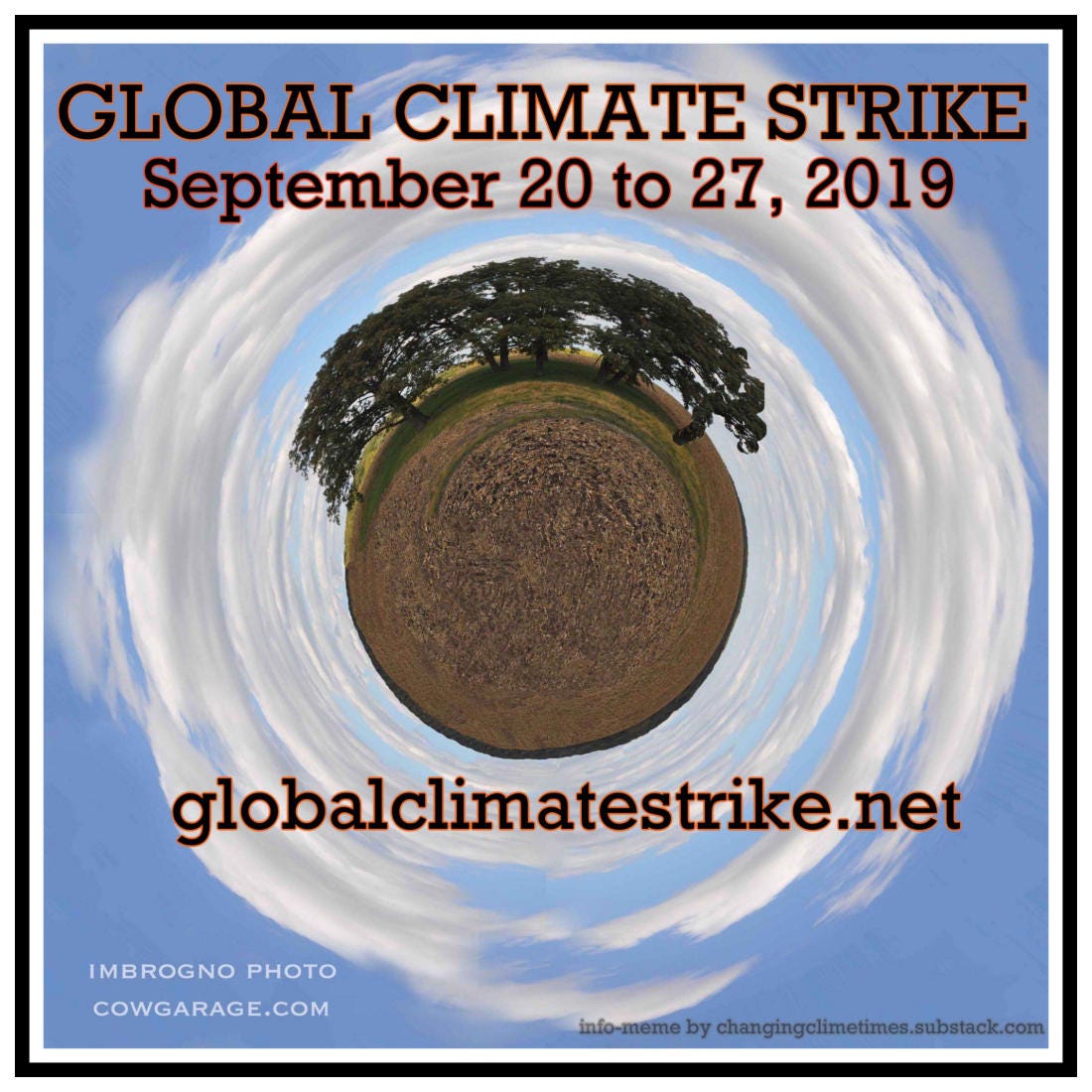

SUBSCRIBE to this podcast wherever podcasts are listed or at our website: changingclimatetimes. substack.com | FOLLOW US on Twitter at @TimesClimate. | FEEDBACK, comments and suggestions to Douglasjohnmartin AT icloud.com
And remember: Change the World. Not the big one. The one in which you live. And love.
Be well. | Your Curator, Concierge and Host Douglas John Imbrogno




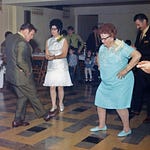
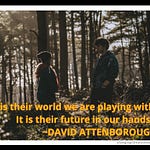
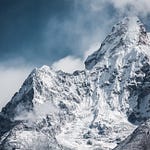
Share this post